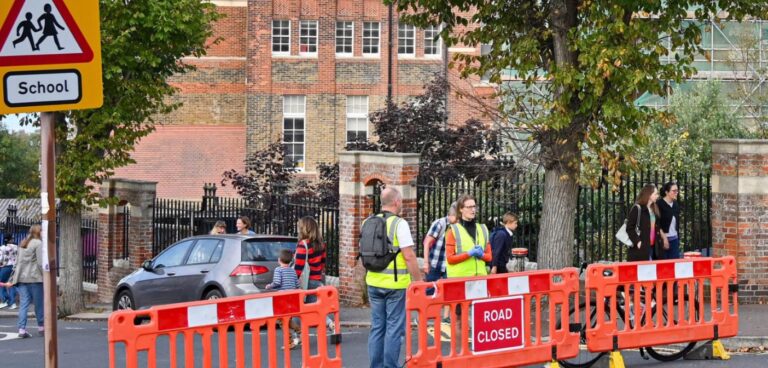School streets schemes deliver low-cost interventions for cleaner and safer journeys, according to London-based non-profit organisation FIA Foundation.
Its School Streets: Putting Children And The Planet First report published in April found these initiatives, which have increased five-fold in less than four years, increase active travel while improving air quality and are popular with parents.
The first school street in the UK was introduced in East Lothian in Scotland in 2012, followed by the first in London (also the first in England) in Camden in 2016. The report found the largest increase came in 2020, in response to Covid-19. Motivated by the need to create additional street space, school streets expanded rapidly with the total number increasing to over 1,000.
According to the report, while most begin as temporary pilots for a trial period a large number have been made permanent daily occurrence on school days.
Many of the cities that have embraced school streets have had issues with air pollution. Previous research funded by the FIA Foundation in London has shown that school streets can lead to a 23% reduction in emissions around schools.
Read more: London air pollution falls following School Street scheme, report finds
Furthermore, School Streets result in a range of other benefits including increased social connections, tranquillity, road safety and physical activity levels, the report stressed.
“Every parent knows the importance of safe and healthy journeys to school. Creating low-stress, safe environments with clean air outside the school gates is the least we should do for our children,” said Saul Billingsley, executive director of the FIA Foundation.
“It is encouraging that the ‘school streets’ model has taken off in many countries. We urge policymakers to expand these schemes which improve road safety, reduce vehicle emissions, and tackle the climate emergency.
“As the UN meets for the High-Level Meeting on the New Urban Agenda, we remind governments and mayors that they have signed up to ensure safe and healthy journeys for every child. This is a practical way to deliver.”





